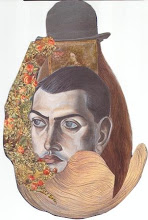Saturday, June 21, 2014
Doctor Who: Wheel of Ice (Book Review)
In the run up to its 50th anniversary in 2013 the Doctor Who brand managers showed an admirable understanding of Doctor Who’s strengths. They dug into its history for material. As well as flaunting their youthful and charming cast with a relentless slate of conventions, press tours, and public appearances more befitting the cast of some teen-centric movie franchise, they also commissioned established sci-fi novelists to reach back and expand the mythology of past incarnations of The Doctor, as with 2012’s Second Doctor adventure The Wheel of Ice, by sci-fi writer and mathematician, Stephen Baxter.
A writer with Baxter’s credentials, including co-author credits with Terry Pratchett and Arthur C. Clarke and a four book story cycle wherein he built and destroyed entire species and galaxies, certainly seems a good match for a Doctor Who story. Baxter’s Xeelee books represent one of few
recent attempts to grapple with the eventual heat death of the universe, along with series three of Doctor Who (10th Doctor and Martha). It's usually a topic speculative fiction writers avoid since its finality kind of tempers the upward-and-outward ethos so beloved of Science Fiction.
For Wheel of Ice Baxter invokes the Second Doctor, he of the ragged jacket, checked trousers and tin whistle. Patrick Troughton as Doctor No. 2 was puckish and impatient. Kindlier than the first Doctor but still of short temper, apt to wear on the nerves of proper authority and, unlike most Doctors, not always interested in the limelight. Often content to hang back and let the “experts” fail before edging in and taking over. It’s a credit to Baxter that the book reads rather bare of style.
The characters are sympathetic and the adventure suitably perilous but the author’s voice seems largely absent. Compare that with the frigidly evoked scenes of dread in recent Who novels like Mike Tucker’s Nightmare of Black Island or the post-Douglas Adams whimsy of Gareth Roberts’s Only Human. Wheel of Ice seems rather more like a pristinely evoked episode from 1969, in pearly black and white with Troughton scrambling through corridors and poking at panels of blinking lights and controls.
Another strength of Baxter’s book is the simplicity of his monster. Not only can you imagine it clearly, it also remains the sole focus of tension. The Blue Dolls, as envisioned in the book, are clearly visible in the mind’s eye and not crowded out by a slew of other hard-to-picture inventions. Previous Who novels have had trouble with this, particularly Justin Richards’s Resurrection Casket wherein you had to keep a vision of a slew of steam-powered pirate robots balanced with their labyrinthine ship and a murderous beastly apparition with oddly good manners. Baxter’s baddie manifests as an army blue plasticine humanoids, simple.
The story does falter by sticking too closely to the Doctor Who television formula of, ‘high-concept giving way to action for the sake of simplicity.’ Presumably Baxter could have explored the implications of his central device, an alien archive trying to rebuild its self and preserve the memory of an ancient race of aliens. Instead he explains it in simple terms and then loses the thread among action scenes and narrow escapes.
That’s fine for TV writers working within a budget and on a tight deadline, but a writer of Baxter’s quality, working in a medium so amenable to unpacking and investigation, might be expected to indulge the imagination a bit more deeply. As it is Wheel of Ice feels like an exceptional story arc from Doctor Who circa 1969, and for that reason is worthwhile and exciting. I just wish it had been a more exceptional novel.
Subscribe to:
Post Comments (Atom)


No comments:
Post a Comment